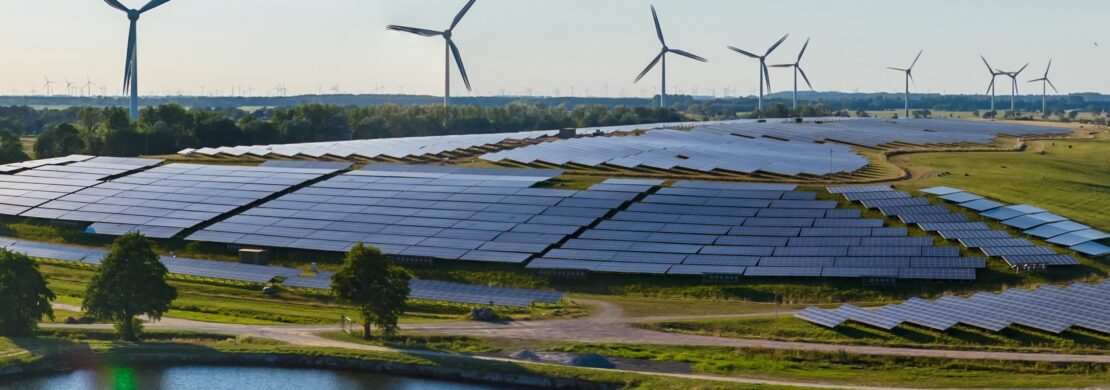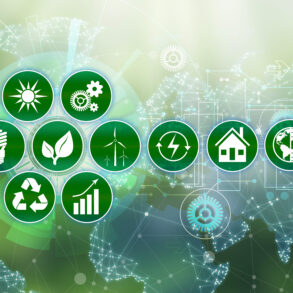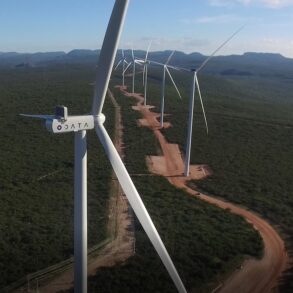Revolutionizing data infrastructure: understand the role of energy self-production
6 minutes readingAt a time marked by digital growth, the world is heading towards a future in which the need for energy to support personal and business activities is enormous. In turn, as energy consumption continues to advance, it is clear that dependence on fossil fuels is no longer viable. This is where energy self-production emerges as a viable alternative to meet the growing demands of technological infrastructures – especially data centers.
In fact, the importance of adopting cleaner energy sources has never been greater. Embracing this change not only guarantees tomorrow but also promotes resilience and creativity in meeting the energy needs of the interconnected world.
In response to this trend, energy self-production is gaining momentum, meeting the energy requirements of data centers while reducing dependence on electrical grids.
In this scenario, energy self-production includes generating clean electricity on-site through sources such as wind farms. This method represents a change in energy acquisition practices, allowing data centers to produce energy autonomously.
Want to know more about this movement? Throughout this article, we will delve into the impacts of the self-production of energy in data centers, including increasing resilience and reducing environmental footprint while promoting long-term sustainability. Read next:
What is energy self-production
Understanding the concept of energy self-production is crucial to navigating the landscape of current technological solutions. In general, the practice essentially involves the generation of electricity on-site, providing independence from energy networks.
In turn, this shift to decentralized energy systems empowers individuals and companies to use resources appropriate to meet their demands while reducing environmental impact.
Thus, in addition to reducing their carbon footprint, organizations also improve resilience and shield their technological structure by mitigating energy interruptions, which guarantees the continuity of operations.
In practice, the energy self-generation uses renewable resources to sustainably produce electricity. And, among them, it is worth highlighting:
- Solar energy: it is a leading option for converting sunlight into electricity through panels;
- Hydroelectric energy: uses the force of running water, such as rivers or dams, through turbines as a way to produce energy independently;
- Wind energy: takes advantage of the power of turbines powered by the wind.
Adopting these methods not only supports environmental sustainability but also encourages innovation and resilience in energy production. Furthermore, reducing dependence on public networks helps mitigate the risks associated with energy distribution, ensuring a more stable and secure supply for individuals or companies.
Clean energy: the role in the energy scenario
In the face of climate change, investing in alternatives to traditional fossil fuels is crucial, as this type of solution significantly reduces greenhouse gas emissions.
Thus, clean energy sources, such as solar, wind, and hydroelectric generation, are characterized by minimizing their impact on the environment. They play a fundamental role in reshaping our energy landscape towards a more planet-friendly future.
Today, the data center industry, known for demanding high energy levels, recognizes the importance of sustainability in its operations. With the continued increase in online activities, data centers require large amounts of energy to sustain daily routines. Therefore, adopting practices such as energy self-production is essential to reduce their environmental impact and contribute to global initiatives to tackle climate change.
By focusing on ESG efforts, data center infrastructure managers and owners can improve their ability to withstand challenges by gaining recognition as pioneers in driving change toward a greener ecological energy landscape.
The importance of clean energy for Data Centers
Energy self-sufficiency is crucial for data centers, as it increases the structure’s reliability and resilience. Data centers work 24 hours a day, and having an uninterrupted power source is vital for this.
With energy self-production, especially wind power, it is possible not only to improve the operation’s sustainability indicators but also to reduce the risks associated with network failures or fluctuations, ensuring operations and data accessibility. This increased reliability not only protects against lost revenue from downtime but also improves customer satisfaction by maintaining consistent service levels.
Furthermore, self-produced energy promotes cost reduction and other long-term benefits. While the initial investment in energy infrastructure may seem substantial, the ongoing operating costs are much lower than with energy procurement methods.
Moreover, as renewable energy technologies progress and become more efficient, the return on investment in self-production projects improves, increasing their viability. This cost-efficiency ratio increases data centers’ performance and strengthens their market competitiveness.
ALSO REED: Understand why Data Centers need renewable energy
The scenario of self-production of energy in Latin America
In the coming years, politics, high-interest rates, and ageing infrastructure are expected to impact Latin America’s energy scenario. Despite these challenges, an increase in investment is estimated as the region continues its shift towards clean electrification.
The study presents the region as a critical actor in the global energy transition, highlighting its potential in green energy projects and abundant natural resources.
The Energy Perspectives in Latin America, survey by the International Energy Agency (IEA), points out that fossil fuels constitute approximately two-thirds of the region’s energy supply, a value well below the global average of 80%. This represents a notable advantage for LatAm in pursuing zero emissions goals, positioning the region favourably within the broader context of the evolving global energy landscape.
Indeed, the region is poised to become a player in the emerging energy economy. With its conducive geography and ample natural resources, economic forecasts suggest it could emerge as a leading center for renewable energy generation by 2030, jumping from 11% to 40% in 2050.
Brazil, Chile and Mexico
Countries like Brazil, Mexico and Chile play a crucial role in driving Latin America’s transition to more sustainable energy options. The three are at the forefront of photovoltaic (PV) energy and wind development efforts. This extensive region extends into Central and South America and has the potential to advance and export low-emission biofuels and hydrogen solutions.
Brazil, known as a “natural giant”, stands out in the market for generating more than 86% of its energy through its own sources. Smaller countries like Panama and Costa Rica are also making progress.
Alongside Argentina, these nations are at the forefront of harnessing solar and wind energy. The region is witnessing an increase in investment in wind farms, potentially paving the way for Latin America to satisfy the global demand for hydrogen in the future.
Today, notable hydroelectric projects are found throughout South America, with one of the most essential dams located on the border between Paraguay and Brazil. These projects are vital in supplying half of their countries’ electricity needs, indicating promising growth prospects for hydroelectric energy in the short term.
Besides that, bioenergy is gaining traction in the South American energy landscape. The region is poised to emerge as a producer of hydrogen and environmentally friendly fuels at affordable prices.
For investors looking for these markets, it is worth highlighting the existence of government regulations involving the public and private sectors, as well as international cooperation agencies, which aim to promote social development in Mexico, Central America, and throughout South America.
ALSO REED: Understand why Data Center outsourcing can improve your company’s sustainability rates
ODATA: own wind farm supplies Data Centers in Brazil
Did you know that ODATA is investing in clean energy and already supplies its Data Centers in Brazil with energy self-production? At the beginning of 2022, the company signed an agreement with Serena, formerly Omega Energia, to obtain a stake in the Assuruá IV wind farm (212 MW) located in Xique Xique, Bahia.
This step positioned ODATA as the first provider of hyperscale data center services in Latin America to generate energy on-site for all of its campuses’ needs, putting into practice its purpose of improving the region’s infrastructure and maintaining the highest sustainability standards. Since November 2023, all energy used by ODATA units in Brazil has been acquired internally.
Knowing where the energy in your Data Centers comes from is vital when considering the impact of the structures. With the increase in data consumption and digital technologies, which require more energy to operate, the industry must prioritize adopting environmentally friendly technologies. Cost reduction and the transition to cleaner energy sources are essential to achieve this goal.
As part of its commitment to ESG practices, ODATA is proud to be self-sufficient in energy production for its Brazilian Data Centers today.
Want to know more about the benefits of self-producing clean energy?
Exclusive E-BOOKS
to help you learn more about the world of colocation.

Related Posts
SUBSCRIBE TO OUR NEWSLETTER






